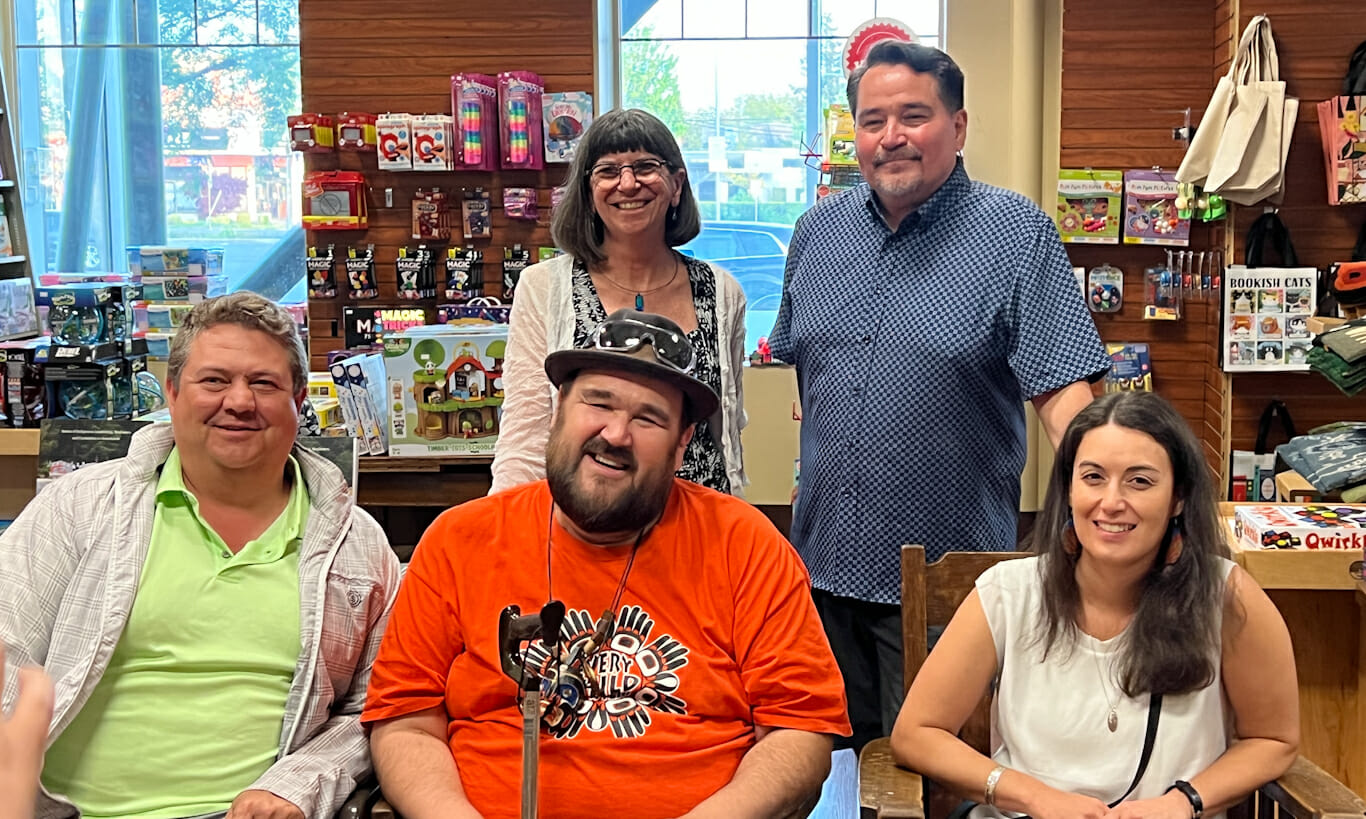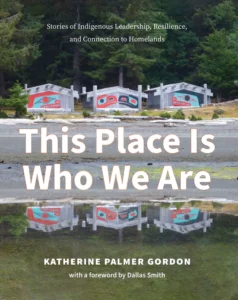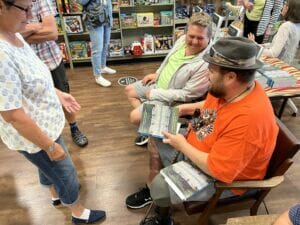Estimated Reading time

4 Mins
This Place Is Who We Are: Stories of Indigenous Strength, Ingenuity, and Connection to the Coast
Katherine Palmer Gordon’s latest book, This Place Is Who We Are, features 10 stories from First Nations communities that are reviving traditional stewardship practices, strengthening cultural connections to their lands and waters, and building healthy coastal economies.


Newly released, This Place Is Who We Are: Stories of Indigenous Leadership, Resilience and Connection to Homelands journeys into the Great Bear Rainforest and Haida Gwaii and invites readers to learn about this part of the world through the eyes of leaders and community members from 10 coastal First Nations.
From cultural rediscovery on X̱aaydag̱a Gwaay.yaay / Xaayda Gwaay Haida Gwaii to the growth of Guardian programs on the central coast, these stories demonstrate the many ways that communities and ecosystems are interconnected. This vital connection is one that Indigenous peoples have known and understood for thousands of years and is fundamental to Indigenous cultures, languages, and ways of interacting with the lands, waters, and life in their territories.
To create these stories, author Katherine Palmer Gordon worked closely with community storytellers and knowledge holders to show how First Nations have kept these traditional values and used them to guide modern conservation, stewardship, and economic development efforts that, in balance, strengthen communities and enrich the ecosystems they rely upon.
With support from Coast Funds and an anonymous donor, Palmer Gordon conducted dozens of interviews, gathered hundreds of photographs, and worked closely with First Nations people to refine their stories and present them to readers in a good way.
These are also all, ultimately, just beautiful stories about good people working hard for their communities, their homelands, the future.
Dallas Smith, a member of Tlowitsis First Nation and Chair of Coast Funds’ board of directors, contributed a foreword to the book, where he writes, “when you talk to the First Nations in our homelands these days, the kinds of stories you hear are the personal stories that showcase this incredible journey we have all taken in the last few decades and the vision for the future…they are mindful of ensuring that the generations following in their footsteps will thrive in their homelands as our ancestors have done since time immemorial.”
“These are also all, ultimately, just beautiful stories about good people working hard for their communities, their homelands, the future,” writes Palmer Gordon in her introduction. “There has never been a better time to listen to these voices, and their inspiring stories.”
Many of the stories in the book are closely tied to the Great Bear Rainforest agreements and the creation of Coast Funds, the world’s first project finance for permanent initiative set up to support First Nations’ conservation and economic priorities.
As a thank you to First Nations on the coast, Palmer Gordon is donating all royalties to the Coast Conservation Endowment Fund Foundation (part of Coast Funds), which generates revenue to support First Nations’ stewardship and Guardian programs.
Hearing From Indigenous Storytellers

On May 16, First Nations leaders who contributed to the book joined Palmer Gordon at Bolen Books in lək̓ʷəŋən territory (Victoria) to celebrate the release and offer insights on their stories. An engaged audience had the opportunity to meet these leaders, ask questions about Guardian programs and conservation financing, and to have copies of their books signed by Palmer Gordon and community storytellers.
In a panel discussion, Ts’xwiixw Megan Moody – a fisheries biologist, Nuxalk citizen, and member of Coast Funds’ board of directors – reflected on her role in the Nuxalk’s connection to sputc eulachon, and the ways her community is empowering youth and preparing the next generation of leaders.
“What I realized [through creating] the book was that it does all come around to our youth and our next generations coming up,” she said. “I see it happening. Our youth are blossoming, artists are coming up, people are proud and wanting to learn more about their culture.”
Chris Roberts, Chief Councillor of Wei Wai Kum First Nation, described the challenges he faced as a newly-elected chief wanting to incorporate Ligʷiłdaxʷ values and cultural practices into his Nation’s economic development and stewardship efforts.
I see it happening. Our youth are blossoming, artists are coming up, people are proud and wanting to learn more about their culture.
“That connection to who we are as an identity. I saw it starting to get lost in, in my generation [and] I started to feel really cynical, that it was maybe too late,” Roberts said. Working on the story with Palmer Gordon created opportunities to reflect on the knowledge his community held and was working to pass down to future generations. “There’s a lot of hope for the future. My son is committed to learning our songs. His best friend, Hunter, is leading songs. They’re 14 years old.”
Merv Child, executive director of Na̲nwak̲olas Council and a member of Dzawada’enuxw Nation, joined Dallas Smith in reflecting on the legacy of the Great Bear Rainforest agreements and the opportunities ahead to protect First Nations’ marine territories.
“We weren’t simply looking at protecting the Great Bear Rainforest [for its] environmental values, we also wanted to address the human well-being side of the equation, do things to help the people who are living here,” Child said. “We’re looking at a similar structure for the MPA network – a number of protected areas being created up and down the coast.”
Where to Buy the Book
If you’d like to purchase a copy, This Place Is Who We Are is available for sale through Harbour Publishing and in bookstores, including:
- Bolen Books (1644 Hillside Ave. Victoria, BC)
- Munro’s Books (1108 Government St. Victoria, BC)
- Iron Dog Books (2671 E Hastings St. Vancouver, BC)
- Massy Books (229 E Georgia St. Vancouver, BC)
- Misty River Books (4710 Lazelle Ave. Terrace, BC)
